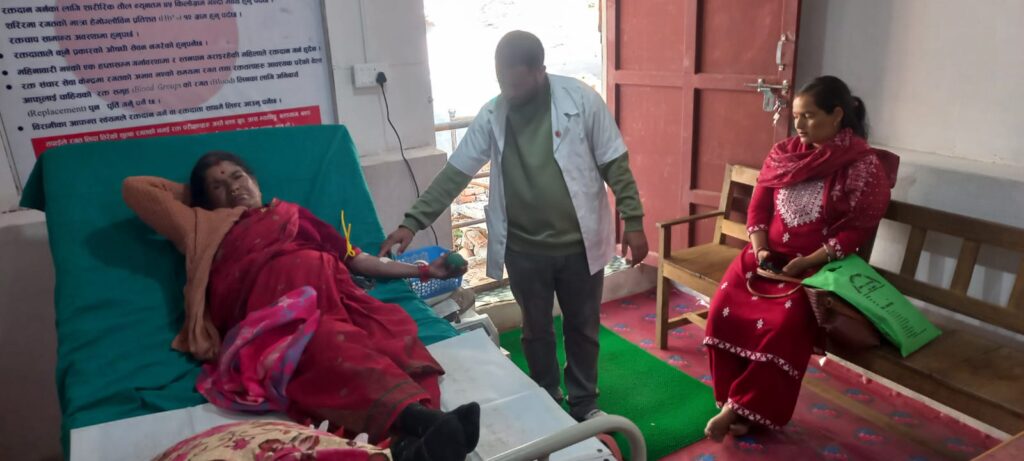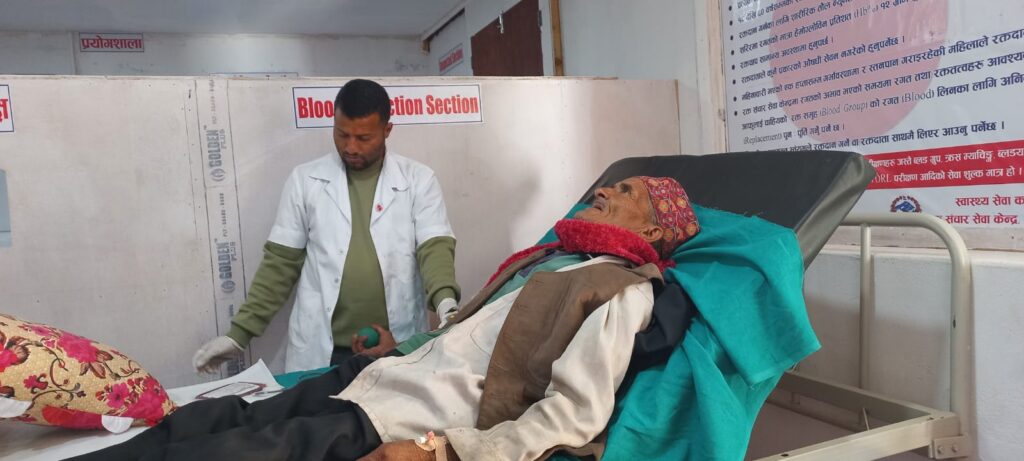Establishment of a Blood Bank at West Rukum District Hospital
Vision and Mission
The overarching vision of this project is to ensure the fullness of life for all people. This means that individuals should experience holistic development—socially, economically, physically, and mentally—allowing them to live dignified and respectful lives wherever they reside.
Project Goals:
The primary goal of this project is to uphold Sustainable Development Goal 3, which focuses on ensuring good health and wellbeing. Specifically, the project aims to address the critical issue of blood scarcity, thereby saving lives in cases of accidents, childbirth, and other emergencies requiring blood transfusions.
Alignment with Strategic Objectives:
This initiative aligns with the Nepal Health Sector Strategic Plan (2023-2030) by contributing to improved health outcomes. The project prioritizes health services within Musikot Municipality and the broader region of West Rukum, which includes East and West Rukum, Jajarkot, Salyan, and Rolpa districts.
Current Situation
Established in 2045 BS, the West Rukum District Hospital serves an average of 300 patients daily and facilitates the delivery of three babies per day. Despite its critical role in the region, the hospital lacks a blood bank, severely impacting its ability to handle emergencies requiring blood transfusions. The hospital has 50 beds and regularly faces the challenge of sourcing blood for emergency cases.
Project Objectives
1. Establish a Blood Bank: Develop a fully equipped blood bank at West Rukum District Hospital to ensure the availability of safe and adequate blood supplies for patients.
2. Enhance Emergency Response: Improve the hospital’s capacity to respond to emergencies, including accidents and childbirth complications, by providing immediate access to blood.
3. Promote Blood Donation: Encourage regular blood donation among the local community, including police and military personnel, to maintain a steady supply of blood.
4. Extend Support to Neighboring Regions: Provide blood donation services to neighboring districts and municipalities when needed, fostering regional health collaboration and support.
Expected Outcomes:
1. Increased Access to Blood: Patients and emergency cases will have easier and quicker access to necessary blood transfusions, significantly reducing the risk of untimely deaths.
2. Improved Health Services: The overall quality and reliability of health services at West Rukum District Hospital will improve, benefiting both the local and surrounding communities.
3. Community Engagement: The establishment of a blood bank will foster a culture of regular blood donation within the community, enhancing communal ties and support systems.
4. Support Regional Health Infrastructure: Neighboring districts will benefit from the availability of blood, promoting regional health stability and collaboration.
Implementation Plan:
1. Infrastructure Development: Construct and equip the blood bank facility with necessary medical equipment and storage solutions.
2. Staff Training: Train medical staff and volunteers in blood collection, storage, and transfusion procedures to ensure high standards of safety and efficiency.
3. Community Outreach: Launch awareness campaigns to educate the public about the importance of regular blood donation and establish blood donation drives.
4. Collaboration with Local Authorities: Work closely with local government, police, and military units to organize periodic blood donation events and ensure a reliable donor base.
Conclusion:
The establishment of a blood bank at West Rukum District Hospital is a critical step towards enhancing health services in the region. By addressing the urgent need for blood, this project will save lives, improve health outcomes, and contribute to the broader goal of ensuring a dignified and respectful life for all individuals in the community.


